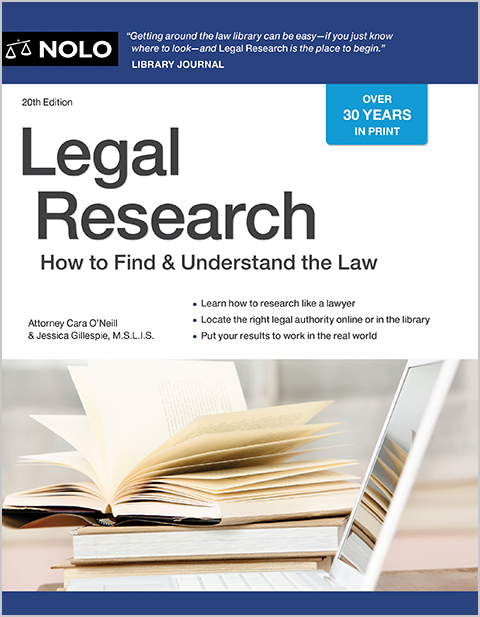Learn what happens when a defendant is coerced into committing a crime.
In criminal law, actions may sometimes be excused if the actor is able to establish a defense called duress. The defense can arise when there's a threat or actual use of physical force that drives the defendant—and would've driven a reasonable person—to commit a crime. A classic example is someone holding a gun to the defendant's head to force the defendant to break the law. Some courts use the term "coercion" or "compulsion" for this defense. (U.S. v. Logan, 49 F.3d 352 (8th Cir. 1995); State v. Baker, 197 P.3d 421 (Kan. 2008).)
Elements of Duress
The defense of duress typically has these elements:
- There is an immediate threat of death or serious bodily injury to the actor.
- The actor has a well-grounded fear that someone will carry out the threat.
- The actor has no reasonable opportunity for escape, except by committing the unlawful act.
(U.S. v. Alzate, 47 F.3d 1103 (11th Cir. 1995); U.S. v. Gonzalez, 407 F.3d 118 (2nd Cir. 2005).)
Immediate Threat of Death or Serious Bodily Injury
The immediate threat of death or serious bodily injury may be expressed by words or implied through actions—for instance, pointing a gun in a threatening way. The threat must be continuous and present; a past threat of violence won't suffice. Usually, neither will a threat of future harm. (U.S. v. Navarro, 608 F.3d 529 (9th Cir. 2010); Frasher v. State, 260 A.2d 656 (Md. Ct. Spec. App. 1970); People v. Petznick, 114 Cal.App.4th 663 (2003); State v. Matson, 921 P.2d 790 (Kan. 1996).)
Although duress is classically framed in terms of a threat to the defendant, most courts say that the defense is available if the threats concern other people, such as the defendant's spouse or child. (U.S. v. Blanco, 754 F.2d 940 (11th Cir. 1985).)
Well-Grounded Fear
The requirement that someone acting under duress have a well-grounded fear that the threat will come to pass refers to an objective standard: The fear must be reasonable. In other words, the defendant must establish that a reasonable person would have had a similar fear. For example, if Joe has threatened and assaulted Amy in the past, Amy may be reasonably afraid of Joe's new threat. Living in an environment of general fear, however, isn't enough to create duress. (Ruffin v. State, 992 So.2d 1165 (Miss. 2008).)
No Reasonable Opportunity for Escape
The duress defense also requires that the defendant have no reasonable avenue for escape. If there's a legitimate way of avoiding the danger other than committing the criminal act, then the defense of duress isn't available. (U.S. v. Harris, 104 F.3d 1465 (5th Cir. 1997).)
Example: One evening, Hank drinks six beers at a bar with his friends. He has a disagreement with some men at the bar. He sees the men leave the bar and goes outside after them. The men produce baseball bats and chase him. Hank gets into his truck and drives away. The police stop and arrest him for drunk driving. Hank's attempt to argue duress will fail because he could have avoided the incident outside of the bar by either staying in it or going back into it once he realized the danger. (State v. Greer, 879 S.W.2d 683 (Mo. Ct. App. 1994).)
Limitations on Duress
Some states provide that the defense of duress is unavailable for certain crimes, like murder. Also, duress typically isn't an option where the defendant ultimately committed the wrongful act because she placed herself in the dangerous situation to begin with, through negligence, recklessness, or some other kind of fault. For example, if Cathy willingly puts herself in a violent situation where it's likely that someone will threaten her, then she can't use the defense. (State v. Gay, 434 S.E.2d 840 (N.C. 1993); U.S. v. Blanco, supra.)
Affirmative Defense
If a defendant wants the judge to instruct the jury about duress, he must show evidence of all the elements of the defense, though the evidence need not be strong. When weighing whether to allow the instruction, the court should generally examine the evidence on its own, rather than compare it to the prosecution's evidence. Courts have differed on whether the prosecution must disprove the defense of duress beyond a reasonable doubt; the Supreme Court has said that the Constitution doesn't require states to hold the prosecution to this burden. (U.S. v. Bailey, 444 U.S. 394 (1980); U.S. v. Allen, 798 F.2d 985 (7th Cir. 1986); Dixon v. U.S., 548 U.S. 1 (2006).)
Get Legal Help
The defense of duress has many ins and outs, and these can vary from state to state, and from state court to federal court. If you face criminal charges, consult an experienced criminal defense attorney. Only such a lawyer can properly advise you of the law in your jurisdiction and explain it as it pertains to your case.

